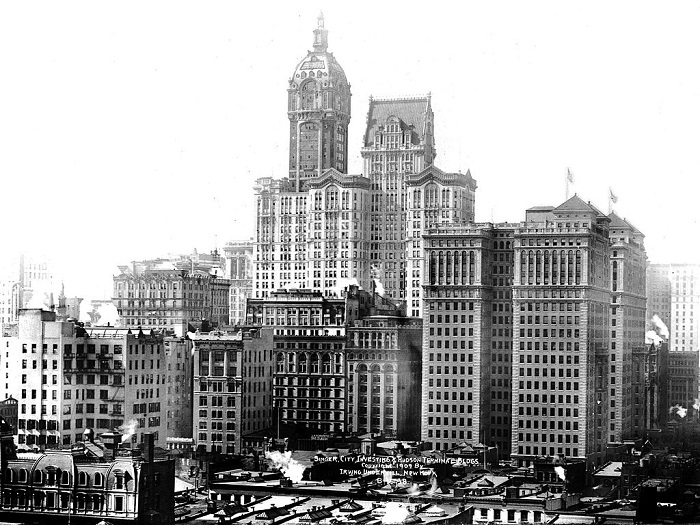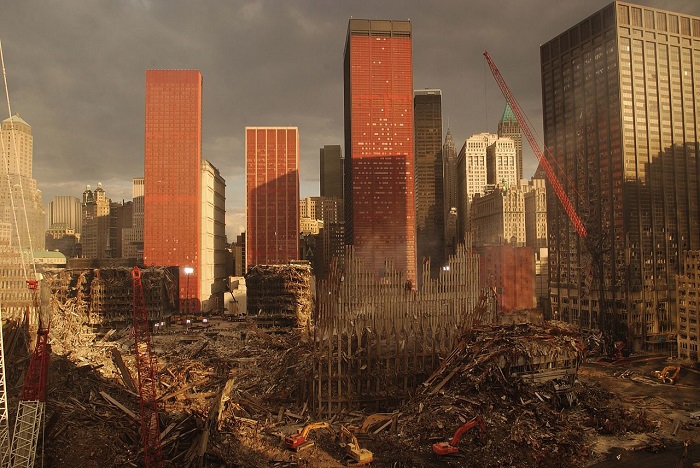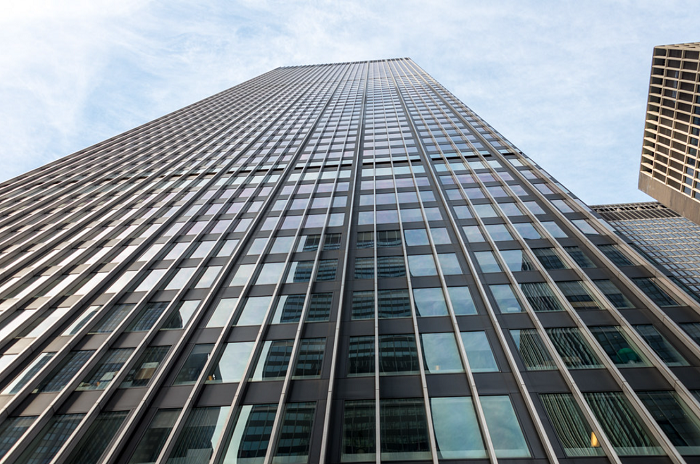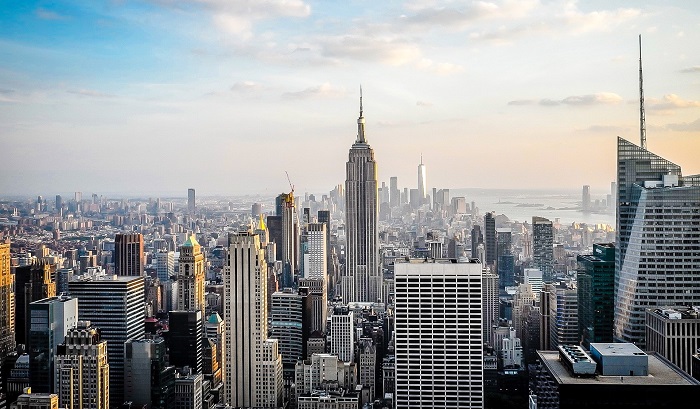ISABEL RUBIO ARROYO | Tungsteno
A plane flies over New York City and strikes a tower more than 400 metres high. Just 10 minutes later, another plane crashes into an adjacent skyscraper. The iconic Twin Towers, which were destroyed two decades ago, are among the tallest buildings on the planet ever to be knocked down. While in that case it was due to the terrorist attacks of 9/11, in others it is the owners themselves who order the building demolished. We look at some of the great demolitions of our era.
Singer Building (1967)
With its 47 floors and 187 metres in height, the Singer Building held the record for the tallest voluntarily demolished building in the world for half a century (until 2021). Designed by architect Ernest Flagg to house the offices of the Singer Corporation sewing machine company, it was the world's tallest building between 1908 and 1909 and the second tallest structure after the Eiffel Tower. The skyscraper, located in Manhattan, consisted of two bodies: a base that filled the entire lot and, on top, a tower that occupied only a quarter of the site. Visitors could pay 50 cents to enjoy the view from the 40th floor observation deck.
In the early 1960s, Singer Corporation sold the building. One of its drawbacks was that much of the tower was taken up by the stairway and elevators. After a string of owners, the company U.S. Steel bought it and tore it down in 1967 to construct another building. The demolition was described by the AIA Guide to New York City as the "city's greatest loss since Penn Station" (a historic railroad station). On the same site, One Liberty Plaza, a 226-metre high, 54-storey skyscraper, was later erected. With over 200,000 m² of floor space, it is one of the largest office buildings in New York.

The Singer Building was 187 metres tall and was demolished in 1967 for an even larger building. Credit: Irving Underhill / Library of Congress Prints and Photographs Division.
One World Trade Center (2001)
On the morning of 11 September 2001, four planes hijacked by members of Al Qaeda were used to attack symbolic buildings in the United States. Among them was the tallest building ever demolished, according to the Guinness Book of Records: the 110-floor One World Trade Center (North Tower), which reached 417 metres in height and was designed by architect Minoru Yamasaki in 1960. Within 10 minutes of the plane crashing into this structure, located in Manhattan and popularly known as one of the Twin Towers, life became a nightmare for those seeking refuge on the most affected floors. Some people threw themselves out of windows from a height of more than 300 metres. In all, some 3,000 people died and more than 25,000 were injured in the aftermath of the attacks, which also led to the collapse of the South Tower of the complex.
Rudolph Giuliani, the then mayor of New York, promised on 11 September 2001 that the city would regain its famed skyline: "We’re going to rebuild, and we’re going to be stronger than we were before." To rebuild the financial heart of Manhattan, more than 25 billion dollars have been invested. Although over time the destroyed area has been reborn with an array of skyscrapers, shopping centres and tributes to the victims of the attacks, the World Trade Center complex has not yet been completed. Among the new buildings is the new One World Trade Center, formerly known as Freedom Tower, which opened in 2014 and reaches 541 metres tall.

One World Trade Center, which was 110 stories and 417 metres tall, was brought down by a plane in 2001. Credit: FEMA Photo Library.
270 Park Avenue (2019-2021)
Last year, the JPMorgan Chase Tower, also known as the Union Carbide Building or 270 Park Avenue, made history by becoming the tallest building to be voluntarily demolished—replacing the Singer Building. Designed by the Manhattan architectural firm Skidmore, Owings & Merrill, the building measured 216 metres and had 52 floors with 223,000 m² of office space.
In 2019, JPMorgan Chase, one of the largest banking and financial services companies in the United States, requested permission to demolish this megastructure, built between 1957 and 1960. In its place, one of the tallest buildings in New York is to be erected: the aim is for the new JPMorgan Chase headquarters to be 423 metres high and 63 storeys high. Construction, which is already underway, is expected to be completed in 2024.

The 216-metre 52-storey JPMorgan Chase Tower skyscraper is the tallest building to be voluntarily demolished. Credit: MikePScott / Flickr.
Meena Plaza I (2020)
The Singer Building, One World Trade Center and 270 Park Avenue are all in Manhattan, the epicentre of skyscrapers in New York City. But throughout history there have been many other intentional demolitions of megastructures around the world. Such is the case of Meena Plaza I, a 168-metre skyscraper in Abu Dhabi that was demolished in 2020 in record time: 18,000 detonators were used to bring down its 144 floors in just 10 seconds.
After the demolition, the area was closed for a few hours. Bill Oregan, CEO of Modon, the company overseeing the demolition, says the aim was to "check that all the explosives have detonated, that the structure has fallen exactly where planned, and that there is no debris outside the project boundaries." The demolition is part of a project to redevelop the area to make way for a major tourist destination in the port area.
In 2020, 18,000 detonators were used to bring down Meena Plaza I in 10 seconds. Credit: Khaleej Times.
Other skyscrapers intentionally demolished in recent decades include the CPF Building, located in Singapore's financial district, or the Tun Razak Tower, a 150-metre building located in Kuala Lumpur and demolished in 2014. Attacks, fires, wars or natural disasters can also destroy large structures and emblematic places. In addition to the 9/11 attacks, there have been other losses of incalculable value: from the damage to Palmyra—an ancient city in the Syrian desert—caused by the Islamic State, to the monuments in the Kathmandu Valley destroyed by the 2015 earthquake in the capital of Nepal, or the 2018 fire that devastated the National Museum of Brazil in Rio de Janeiro.
· — —
Tungsteno is a journalism laboratory to scan the essence of innovation. Devised by Materia Publicaciones Científicas for Sacyr’s blog.
